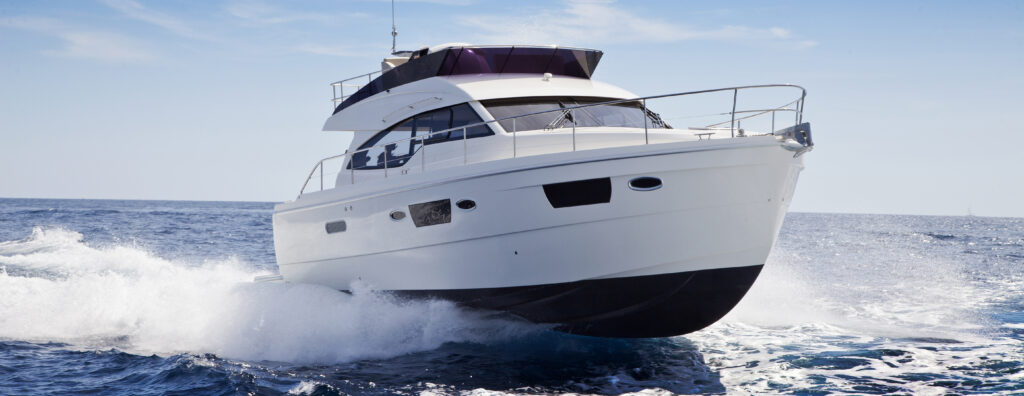
Anti-fouling products can be beneficial in stopping the growth of organisms on boats, but they can be hazardous to both humans and marine life due to their toxicity.
Therefore, as a boat owner, it is important to follow safety precautions when applying anti-fouling paints. Always wear personal protective equipment (PPE) such as gloves, a long-sleeved shirt, pants, and a face mask, and making sure to work in a well-ventilated area to avoid inhaling any fumes.
After you finish painting, thoroughly clean your equipment and dispose of any leftover paint responsibly. Lastly, never leave paint containers open and keep them out of reach of children and pets.
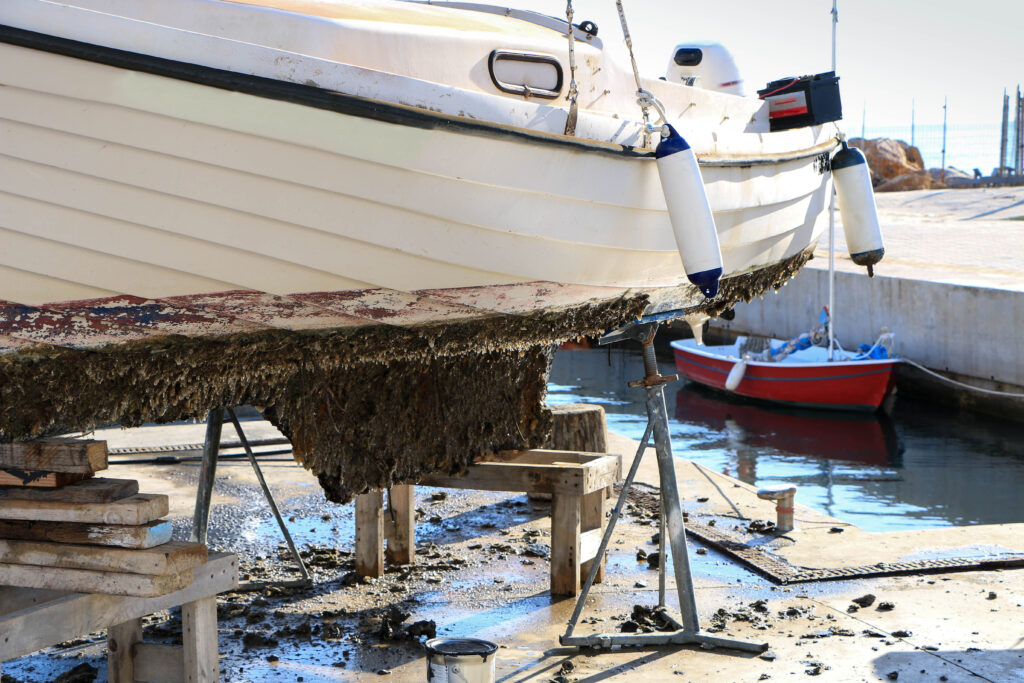
Protect yourself
Coming into contact with paint used to prevent the growth of aquatic organisms may cause skin and eye irritation, as well as long-term health issues. To protect yourself, it is important to wear the appropriate protective gear to stop paint from making contact with your skin or entering your lungs.
You should also ensure that you have adequate ventilation when using anti-fouling paints, as well as appropriate skin and eye protection. If you are using a spray gun, you should make sure that you are wearing a respirator to prevent any paint fumes from entering your lungs.
It is also important to keep children and animals away from the area when applying paints, as they are particularly vulnerable to the effects of paint fumes. Finally, make sure you clean up thoroughly after you have finished painting, and dispose of any waste safely.
The Health and Safety Authority have put together an informative article about FAQ on PPE.
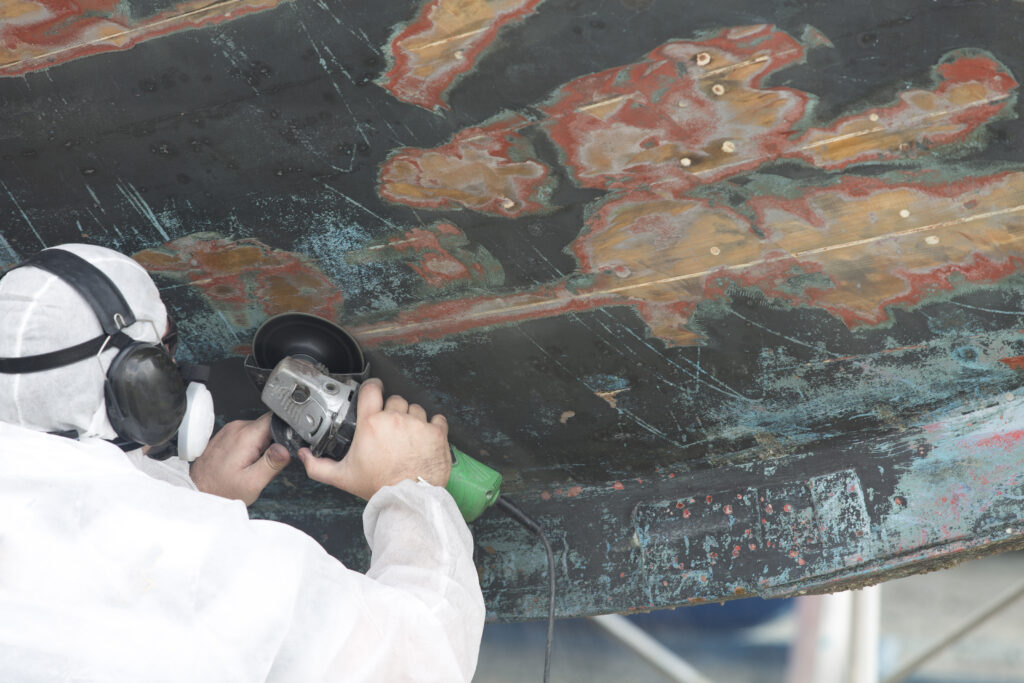
Paint application
Before you start painting, you should cover any areas that you don’t want to be painted with plastic sheeting. Make sure you wear protective clothing, gloves and a face mask when painting to protect against paint fumes. You should also ensure that you have adequate ventilation in the work area – this may involve opening doors and windows, or using a fan. It is important to keep an eye on the wind direction and current in the area, as this can cause overspray to drift away from the controlled work area.
To keep paint from drifting away from the area where it is being applied, there are several methods that can be used. Tarps or panels can be set up to keep the overspray contained, and if available, a dry-dock can be used to further prevent the paint from spreading. It is important to check with your marina to see if they have the necessary equipment and facilities available to assist in this.
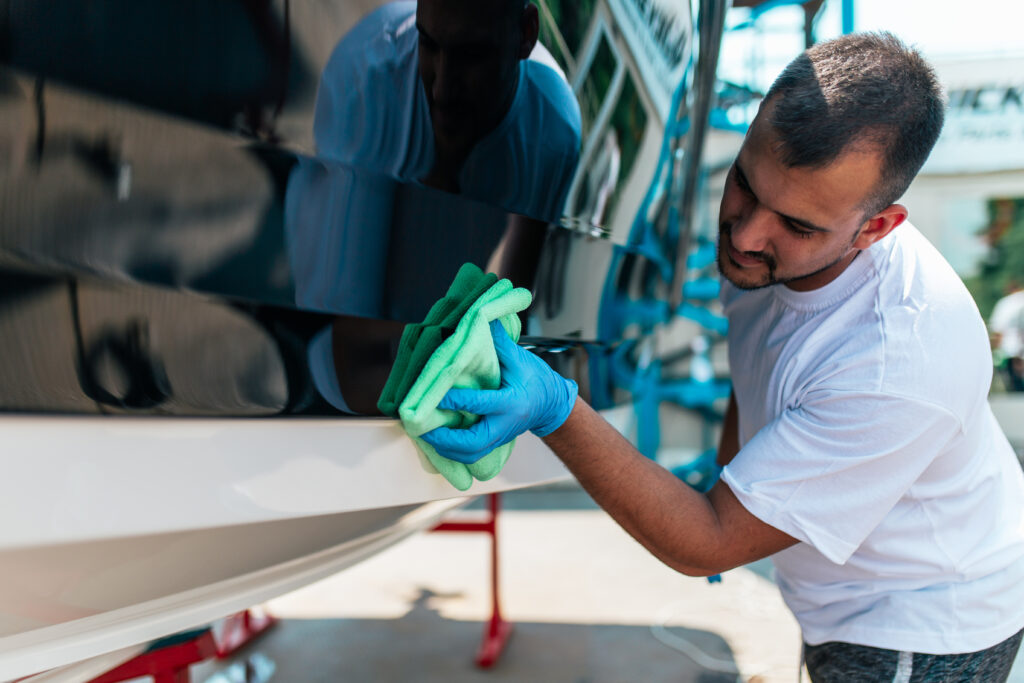
Know your product
Prior to employing anti-fouling boat paint, it is essential to read the instructions on the label. This will provide necessary details regarding the particular hazards and contents of the product, as well as the recommended safety precautions and methods of disposing of the paint. Additionally, the paint manufacturers product safety data sheet should be consulted for information about any required first aid, proper storage, safe handling, and protective gear to use.
Collecting and disposing of waste
When taking measures to clean your boat, it’s essential to remember that the old paint can still contain hazardous substances that could be damaging to both humans and the natural environment. It is thus important to carefully collect and dispose of any paint waste generated in the process.
It is important to protect yourself while working with anti-fouling paint by wearing chemical-resistant gloves, overalls, and goggles. To prevent paint scrapings from traveling, set up a tarp or drop sheet beneath your boat when using a scraper.
After completing the job, sweep or vacuum the area to ensure no paint dust is left behind. If you are wet sanding the hull, position booms around the work area to contain any residue. Finally, once the area is dry, collect any paint residue and dispose of it properly in an eco-friendly manner.
If you don’t have access to a marina’s waste treatment facilities, you must still get rid of anti-fouling paint waste correctly. This could involve taking it to a hazardous waste landfill. Contact your local council to find out if one is close to you and if a hazardous waste treatment operator is available.
Painting and cleaning boats should be done when the weather is still and not windy. This action will decrease the possibility that your actions will negatively affect other people and the environment.
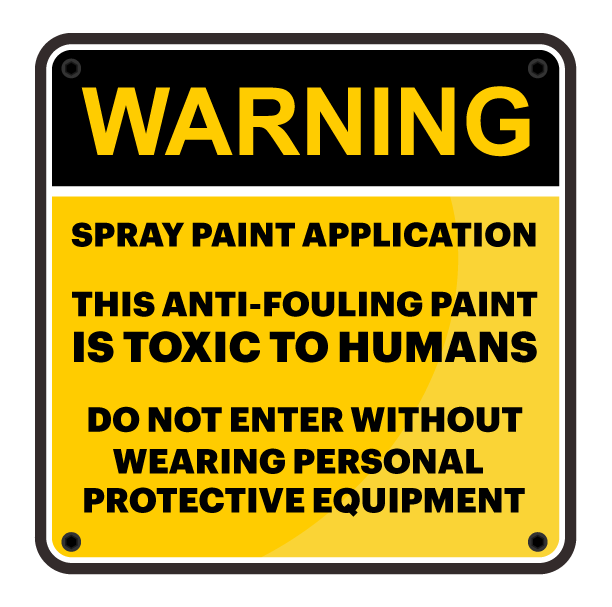
Posting signs
When using spray paint, it is essential to put up signs to alert anyone near the work area of the potential dangers. These signs must be placed at each entrance, and must be visible from a minimum distance of 10 metres.
The signs must include a warning about the toxicity of the paint, the name of the person in charge of the application, and the necessity of wearing the necessary protective gear when entering the controlled work area.
Our Products
Our shop in Portumna, Co. Galway displays a wide range of anti-fouling products and accessories to suit our needs.
Take a look at these essential steps and tips on How to Paint a Boat.
